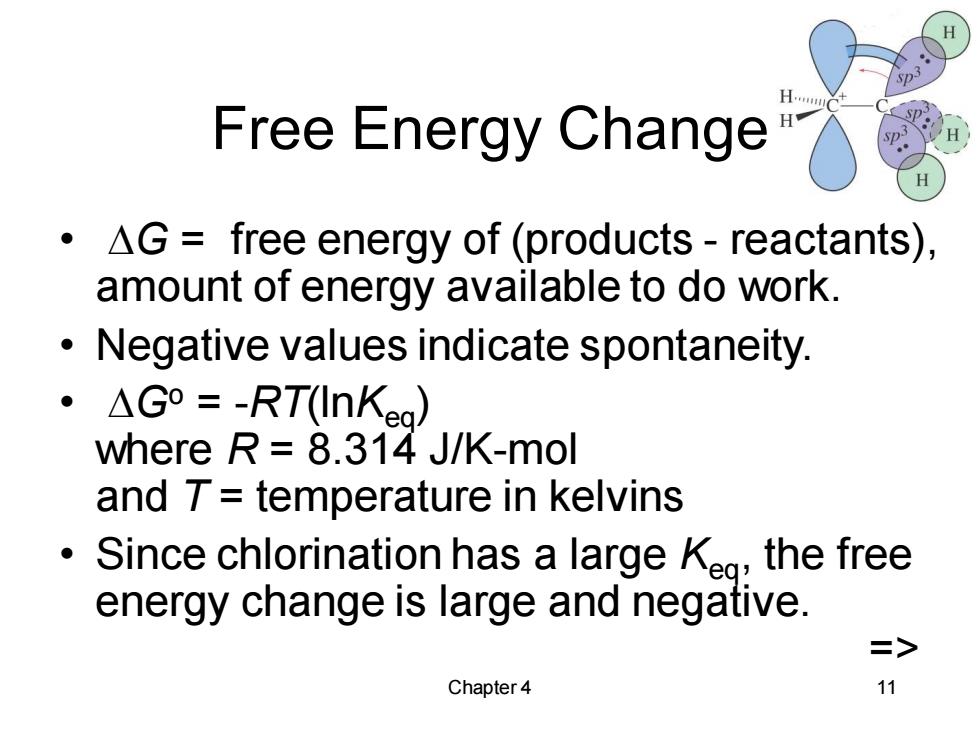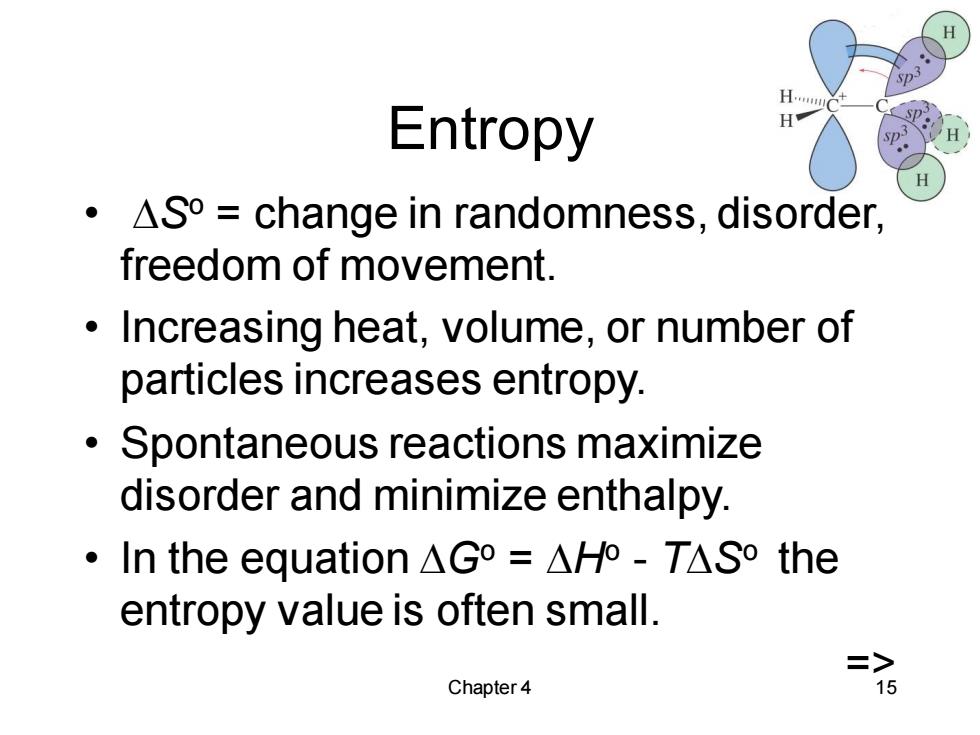
H Free Energy Change ·△G=free energy of(products-reactants), amount of energy available to do work. Negative values indicate spontaneity. ·△Go=-RT((InKeg) where R=8.314 J/K-mol and T=temperature in kelvins Since chlorination has a large Keg:the free energy change is large and negative. => Chapter 4 11
Chapter 4 11 Free Energy Change • DG = free energy of (products - reactants), amount of energy available to do work. • Negative values indicate spontaneity. • DGo = -RT(lnKeq) where R = 8.314 J/K-mol and T = temperature in kelvins • Since chlorination has a large Keq, the free energy change is large and negative. =>

H. Problem Given that -X is -OH,the energy difference for the following reaction is -4.0 kJ/mol. What percentage of cyclohexanol molecules will be in the equatorial conformer at equilibrium at25°C? H => equatorial X axial Chapter4 12
Chapter 4 12 Problem • Given that -X is -OH, the energy difference for the following reaction is -4.0 kJ/mol. • What percentage of cyclohexanol molecules will be in the equatorial conformer at equilibrium at 25°C? =>

Factors Determining△G° H以 SD- Free energy change depends on >enthalpy >entropy ·△Ho=(enthalpy of products)-(enthalpy of reactants) ·△S°=(entropy of products)-(entropy of reactants) ·△G°=△H°-T△S => Chapter 4 13
Chapter 4 13 Factors Determining DG • Free energy change depends on ➢enthalpy ➢entropy • DH = (enthalpy of products) - (enthalpy of reactants) • DS = (entropy of products) - (entropy of reactants) • DG = DH - TDS =>

H Enthalpy H ·△Ho=heat released or absorbed during a chemical reaction at standard conditions. ·Exothermic,(-△),heat is released. ·Endothermic,(+△),heat is absorbed. Reactions favor products with lowest enthalpy (strongest bonds). => Chapter 4 14
Chapter 4 14 Enthalpy • DHo = heat released or absorbed during a chemical reaction at standard conditions. • Exothermic, (-DH), heat is released. • Endothermic, (+DH), heat is absorbed. • Reactions favor products with lowest enthalpy (strongest bonds). =>

H..om Entropy H ·△So=change in randomness,disorder, freedom of movement. Increasing heat,volume,or number of particles increases entropy. Spontaneous reactions maximize disorder and minimize enthalpy. ·In the equation△Go=△Ho-T△So the entropy value is often small. => Chapter 4 5
Chapter 4 15 Entropy • DSo = change in randomness, disorder, freedom of movement. • Increasing heat, volume, or number of particles increases entropy. • Spontaneous reactions maximize disorder and minimize enthalpy. • In the equation DGo = DHo - TDSo the entropy value is often small. =>